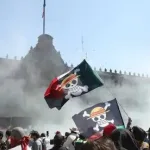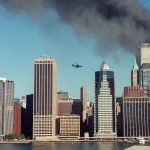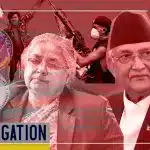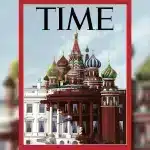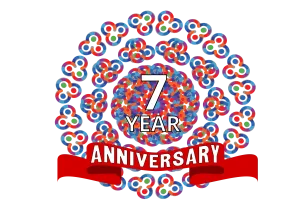
By Kit Klarenberg – Jun 8, 2024
It is surely no coincidence that in recent months, there has been much muttering about the possibility of formal Western military deployments to Ukraine.
In recent weeks, there has been a flurry of mainstream reports on Ukraine’s absolutely catastrophic frontline situation. The starkest to date was a lengthy Washington Post investigation published June 2nd, Basic training in Ukraine is barely covering the basics, commanders say. Its details make for chilling reading. Not just because of the utterly dire battlefield situation for Kiev sketched, but because they may well herald formal NATO involvement in the proxy war.
Ukraine’s new mobilisation law opens up almost the entire local male population from 16 and above to conscription. It was so controversial, and contested by lawmakers, the legislation was subject to 4,500 separate amendments over its protracted gestation in parliament. The Washington Post kicks off by noting the move was a desperate bid to “address a critical shortage of soldiers amid intensified Russian attacks.”
This a nauseating euphemism for hundreds of thousands of military age Ukrainians being dead and buried, leaving Kiev perilously close to incapable of keeping the proxy war grinding on. Entire industries and businesses in every economic sector are also now unable to recruit staff. To make matters even worse, “commanders in the field say they are bracing for most of the new troops to arrive with poor training.” One UAF soldier said teaching in local training centers “is complete nonsense…Everything is learned on the spot.”
The outlet records how, “Ukrainian commanders have long griped about lackluster preparation for recruits at training centers.” So much greater is their grievance now, with “an influx of conscripts under the new law…still months away,” and those few conscripts from the current “batch” still arriving – having been violently dragged away from civilian life by military press gangs – having received “training” that’s “so deficient, they must often devote weeks to teaching them basic skills,” including “how to shoot.”
One battalion commander quoted in the article bitterly lamented how his unit had been sent conscripts who “didn’t even know how to disassemble and assemble a gun.” They were then forced to spend a week simply “making sure each [arrival] fired at least one box of bullets – some 1,500 shots – daily before moving on to more complex tasks.” Those soldiers could soon be fighting near Chasiv Yar, “where Russian forces have been making advances.” The commander concluded:
“We are just wasting a lot of time here on basic training. If, God forbid, there will be a breakthrough near Chasiv Yar, and we get new infantry that doesn’t know basic things, they will be sent there to just die.”
After two years of grinding, attritional warfare against Russian forces, Kiev’s own soldiers are “critically understaffed and losing ground,” facing a “dire situation.” There simply aren’t “enough troops to defend against relentless assaults,” creating a ludicrous situation in which soldiers have been reassigned from safe “rear roles” and “given just two weeks preparation before being sent into combat, to carry out tasks that at times require sneaking behind enemy lines.” In other words, potential, likely or inevitable suicide missions.
In this context, the Washington Post referring to Ukrainian authorities being “slow to ramp up mobilization efforts” due to the “issue” being “politically fraught” is extremely incongruous. The country has since February 2022 been under martial law. State control over the media and censorship has ever-ratcheted, with critical citizen voices and journalists, most recently anti-war socialist Bogdan Syrotiuk silenced and jailed, and opposition parties banned. Elections have been postponed indefinitely. Volodymyr Zelenskyy is effectively President for life, or until he elects to stand down.
Might the government fear full mobilisation could precipitate a revolution, or internal coup? Whatever the truth of the matter, Zelensky’s public rejection of now former UAF chief Valery Zaluzhny’s demand for 500,000 new soldiers due to a purported lack of evidence such a figure was necessary, and the fact “Ukraine would struggle financially to pay so many new soldiers’ salaries” is hardly convincing. An alternative explanation could simply be there aren’t half a million war-fit Ukrainian men left in the country.
Kiev’s rapidly mounting casualties are so catastrophically vast, even the Western media has been forced to acknowledge the kill count. Mainstream articles in recent weeks have sketched bleak accounts of entire towns and villages with no male population left, due to all local men either dying on the frontline, or fleeing conscription. Another unnamed UAF source was quoted by the Washington Post as bitterly complaining about the ‘quality’ of the remaining conscript pool:
“If they send us to recruit someone, all the good ones have already been taken by other brigades, and you have to choose from the crooked, lame, sick ones. And so you choose from them, dammit.”
Let Ukraine Freely Strike Russia With Western Arms – NATO Chief
Manpower issues aside, a chronic lack of ammunition, and concerns about its use, means recruits get little experience firing live rounds before being dispatched to the meat grinder. An unnamed UAF officer claimed trainees receive just 20 bullets per person, “there are no grenades for throwing in training centers, and there are no grenade launcher rounds in the training center.”
“This is the problem. We don’t have a proper training system in place,” they added, before going on to declare Ukraine “needs its instructors to be taught by NATO trainers to condense the standard two-month basic training into one month…at [overseas] facilities that can’t be targeted by Russian bombardment.”
XXXX
The Washington Post went on to note that foreign-based military training for Kiev was already ongoing. “Britain so far has provided the most basic training for Ukrainians,” the outlet reported, while “France is considering sending instructors to Ukraine to help prepare draftees.” It is reportedly hoped improved training will ease fears of conscription among the general population, preventing the male population’s preemptive exodus – and presumably, emergence of further damaging video footage of young men being violently attacked and bundled into vans by “recruiters”.
Herein lies the article’s key propaganda message, in the eternal spirit of “problem-reaction-solution”. In this narrative, Ukraine isn’t in fact losing because of an absolutely apocalyptic “manpower shortage”, but because its remaining soldiers aren’t receiving sufficient Western military training. Were this to be greatly increased, and NATO dragged further – and openly – into the proxy war, the hitherto irreversible tide could be turned. Possibly. So let’s just see.
It is surely no coincidence that in recent months, there has been much muttering about the possibility of formal Western military deployments to Ukraine. An initial suggestion in March by French President Emmanuel Macron of sending 30,000 soldiers to Odessa was robustly knocked back by Russian State Duma Deputy Speaker Pyotr Tolstoy, who promised Moscow’s forces would simply “kill all French soldiers who will come to the territory of Ukraine.” Such an action would represent a clear breach of the Kremlin’s redlines.
As such, it appears the strategy is to slowly but surely introduce a formal Western presence to Ukraine, in the form of “advisers” and trainers. Baltic political chiefs have openly urged in-country training from NATO members, claiming this would not represent an escalation. Then, on May 31st, NATO secretary Jens Stoltenberg pledged that the alliance would moving forward “play a greater coordinating role in the provision of equipment and training,” and support Kiev financially and militarily “each year, for as long as necessary.”
Just two days later, the Washington Post published its advertisement for training of Ukrainian soldiers. It must never be forgotten that in the heavily controlled mainstream media landscape, coincidences are a very rare thing indeed.
The opinions mentioned in this article do not necessarily reflect the opinion of Al mayadeen, but rather express the opinion of its writer exclusively.

Kit Klarenberg
Kit Klarenberg is an investigative journalist exploring the role of intelligence services in shaping politics and perceptions.
- Kit Klarenberg
- Kit Klarenberg
- Kit Klarenberg
- Kit Klarenberg
Tags: mobilizations NATO Russia Ukraine War




